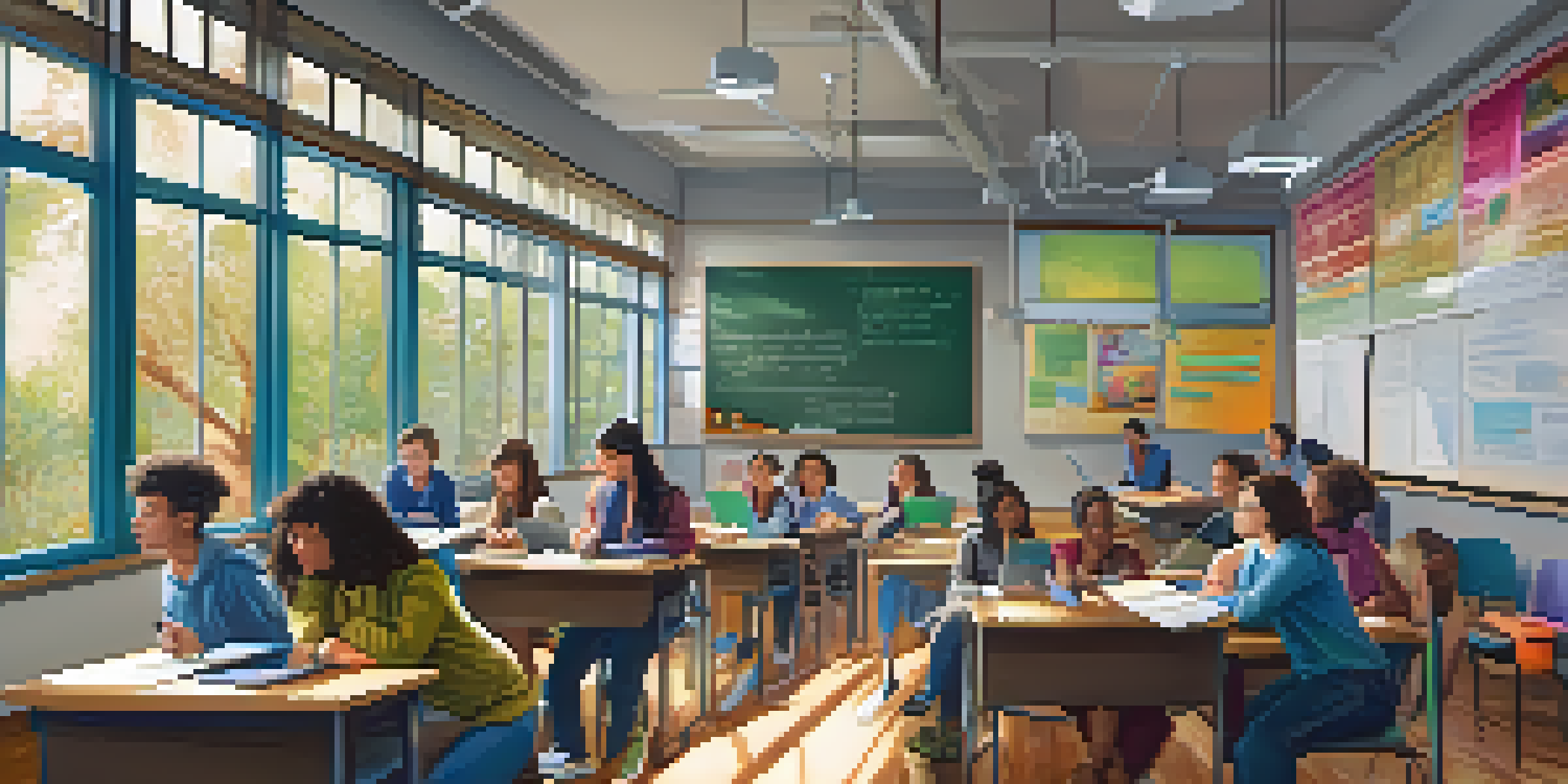Twitter as a Real-Time Learning Tool for Students and Educators

Understanding Twitter as an Educational Tool
Twitter, often seen as a social networking platform, is a powerful educational tool. It allows users to share ideas, resources, and updates in real time, making it an ideal space for learning. Both students and educators can engage with content dynamically, fostering a culture of continuous learning.
Education is the most powerful weapon which you can use to change the world.
The platform's brevity encourages concise communication, honing critical thinking and summarization skills. For students, this is a chance to express complex ideas in just 280 characters, a skill that is increasingly valuable in today's fast-paced world. Educators can capitalize on this by guiding discussions that challenge students to think critically.
Additionally, Twitter's global reach connects individuals from diverse backgrounds, enhancing cultural awareness and collaboration. This connection bridges gaps between different educational contexts, allowing for a richer learning experience that transcends geographical boundaries.
Real-Time Updates and Learning Opportunities
One of Twitter's most significant advantages is its real-time nature, which keeps users updated on the latest news and trends. For students, this means access to the latest research findings, educational trends, and global events as they happen. This immediacy allows them to relate classroom learning to real-world scenarios quickly.

Educators can leverage this feature to curate and share timely resources, making lessons more relevant and engaging. By incorporating current events into their teaching, they help students see the importance of their studies in real life, sparking greater interest and motivation.
Twitter Enhances Real-Time Learning
The platform provides immediate access to the latest educational trends and global events, enriching classroom discussions.
Moreover, Twitter chats and discussions serve as platforms for live learning experiences, where educators and students can connect with experts and thought leaders. These interactions can inspire new ideas and foster a collaborative learning environment, reinforcing the importance of community in education.
Networking and Building Professional Communities
Twitter fosters networking opportunities that can be invaluable for both students and educators. By following industry leaders, researchers, and educational institutions, users can stay informed and connected. This access opens doors for mentorship, collaboration, and professional growth that might not be available in traditional settings.
The beautiful thing about learning is that no one can take it away from you.
For students, networking via Twitter can lead to internships, job opportunities, and connections with peers who share similar interests. Engaging with professionals in their fields helps them gain insights into career paths and industry expectations, making their educational journey more purposeful.
Educators can also benefit by connecting with fellow teachers globally, sharing best practices, and participating in professional development opportunities. This exchange of ideas not only enhances their teaching strategies but also creates a supportive community where they can grow and learn together.
Accessing Diverse Educational Resources
Twitter is a treasure trove of educational resources, from articles and blogs to videos and podcasts. By following relevant hashtags and accounts, students and educators can discover a wealth of information that enriches their learning experience. This access can broaden their understanding of subjects beyond what is taught in the classroom.
For instance, hashtags like #EdChat and #EdTech connect users to discussions on innovative teaching methods and technology in education. This not only helps educators stay current but also encourages students to explore different perspectives on their studies.
Networking for Professional Growth
Twitter fosters connections between students and industry professionals, opening doors to mentorship and career opportunities.
Additionally, educators can curate lists of valuable accounts and resources, creating a personalized learning hub for their students. This act of curation empowers students to take charge of their learning by encouraging them to seek out and share resources with their peers.
Engaging in Educational Discussions and Debates
Twitter provides a platform for vibrant discussions and debates on educational topics. Students can engage in conversations that challenge their viewpoints and encourage critical thinking. This interaction promotes a culture of respectful debate, where diverse opinions can coexist and be explored.
Educators can facilitate these discussions by prompting students with thought-provoking questions or current events. This not only helps students articulate their thoughts but also teaches them how to defend their ideas logically and respectfully.
Moreover, these discussions can extend beyond the classroom, allowing students to engage with a broader audience. By sharing their insights and participating in debates, they develop communication skills that will be essential in their future careers.
Incorporating Twitter into Lesson Plans
Integrating Twitter into lesson plans can enhance student engagement and learning outcomes. Educators can use it as a tool for collaborative projects, where students share their work and receive feedback from peers and experts alike. This not only makes learning interactive but also encourages accountability.
For example, a history teacher might have students tweet about historical figures, encouraging them to research and present their findings creatively. This kind of activity fosters creativity and critical thinking, making learning more enjoyable.
Diverse Resources at Your Fingertips
By following relevant accounts and hashtags, users can discover a variety of educational resources that expand their learning.
Additionally, educators can utilize Twitter for formative assessments by having students share reflections on their learning. This real-time feedback can inform teaching practices and help students identify areas for improvement, creating a more responsive learning environment.
Navigating the Challenges of Twitter in Education
While Twitter offers numerous benefits, it's essential to acknowledge the challenges it presents in an educational context. Issues such as misinformation, distractions, and the potential for negativity can hinder the learning process. Educators must prepare students to navigate these challenges effectively.
Teaching digital literacy becomes crucial in this regard. Students should learn how to discern credible sources and engage positively in online discussions. Educators can guide students in developing the skills needed to use Twitter responsibly, ensuring that they benefit from the platform's resources.

Moreover, setting clear guidelines for Twitter use in the classroom can help mitigate distractions. By establishing expectations for engagement and content sharing, educators can create a focused learning environment that maximizes the advantages of this dynamic platform.